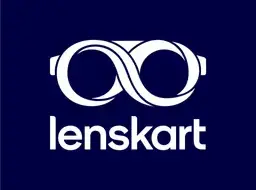
The Humble Beginnings
In 2010, Peyush Bansal founded Lenskart, a small traditional eyewear retailer with big dreams. Initially, Lenskart operated like any conventional store, relying on physical locations and manual inventory management. Customers had to visit these stores to browse and purchase eyewear, a process constrained by geographical limits and a limited selection of products.
Embracing Technology
Realizing the potential of digital transformation, Lenskart decided to innovate. Here’s how they did it:
- E-Commerce Platform: Lenskart launched a robust online store, allowing customers to shop for eyewear from the comfort of their homes. This move instantly broadened their market reach, enabling them to serve customers across India.
- Virtual Try-On: One of Lenskart’s most groundbreaking innovations was the virtual try-on feature. Using augmented reality (AR), customers could see how glasses would look on their faces before making a purchase. This technology alleviated the uncertainty of online shopping and boosted customer confidence.
- AI-Powered Recommendations: Leveraging artificial intelligence (AI), Lenskart began offering personalized product recommendations. By analyzing customer data and purchase history, the AI system suggested frames and lenses tailored to individual preferences, enhancing the shopping experience.

- Supply Chain Optimization: By integrating data analytics and IoT, Lenskart streamlined its supply chain. This included real-time inventory tracking, automated restocking, and predictive analytics for demand forecasting, reducing costs and improving efficiency.
- Omni-Channel Presence: Lenskart seamlessly integrated its online and offline operations. Customers could buy online and pick up in-store, or visit a store to try on frames and complete the purchase online. This flexibility catered to various customer preferences and provided a seamless shopping experience.
The Technological Impact
The strategic integration of technology revolutionized Lenskart’s business:
- Expanded Reach: The e-commerce platform allowed Lenskart to reach customers nationwide, breaking geographical barriers and significantly expanding their market.
- Enhanced Customer Experience: Technologies like virtual try-on and AI-powered recommendations personalized the shopping experience, fostering customer loyalty and increasing sales.
- Operational Efficiency: Optimized supply chain management reduced operational costs and improved service quality, ensuring faster delivery times.
- Market Leadership: Lenskart’s innovative use of technology set them apart from competitors, establishing them as a leader in the eyewear industry.

The Counterfactual: Without Technology
Had Lenskart not embraced technology, the company would have faced several challenges:
- Limited Growth: Sticking to physical stores would have restricted their market reach and growth potential.
- Operational Inefficiencies: Manual processes would have led to higher operational costs and slower service.
- Customer Disengagement: Without digital tools, the shopping experience would have been less engaging and convenient, potentially driving customers to competitors.
- Competitive Disadvantage: In the digital age, failing to adopt technology would have left Lenskart lagging behind more innovative competitors.
Conclusion
Lenskart’s transformation from a traditional eyewear retailer to a tech-driven industry leader underscores the power of technology in modern business. By embracing e-commerce, AR, AI, and advanced analytics, Lenskart not only enhanced its operations but also revolutionized the customer experience. Their journey highlights the critical importance of digital transformation in achieving growth, efficiency, and competitiveness in today’s business landscape.


